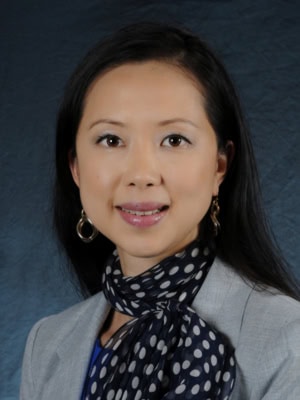Y. Claire Yang

Ph.D., Alan Shapiro Distinguished Professor, Sociology
Lineberger Cancer Center Faculty Fellow
yangy@unc.edu
Curriculum Vitae
Google Scholar Profile
PubMed Publications
CPC Publications
ORCID iD
I study complex patterns and biosocial mechanisms of population health disparities and their temporal dynamics and life course variations.
Yang conducts transdisciplinary research focusing on social disparities in health and aging that crosscuts demography, medical sociology, life course sociology, social epidemiology, and quantitative methodology. She has established an innovative and proliferative program of scholarship across these areas. Her overarching goal is to discover complex patterns and mechanisms of population health disparities and their temporal dynamics and life course variations. Specifically, her research aims to explicate the life course process by which social stress contributes to aging related diseases and mortality and the underlying biological pathways, to uncover how it is that exposures and experiences "get under the skin" to manifest in health differences, and to understand and find solutions to problems arising from reciprocal interactions between individuals' social and physical worlds. Her general approaches are to 1) bring integrative biosocial theoretical perspectives to bear on the analyses of diverse forms of big health data (e.g., vital statistics, sample surveys, clinical biomarkers, and administrative records); 2) to develop new statistical models and methods for integrative data analyses of these data across the full life course from birth to old age; and 3) to construct a multisystem explanatory framework across levels (cellular, organism, developmental, behavioral, and structural) for understanding mechanisms of health and aging jointly affected by social contexts and biological processes over the life course.
Her contributions to science lie in five areas:
- Biodemography of aging, chronic disease, and mortality: Previous theories of aging, survival, and longevity have not been fully tested by accounting for population heterogeneity or social historical forces and contexts. Dr. Yang employed population-level data on chronic diseases and mortality rates and advanced demographic modeling techniques to test and extend previous theories of dynamics of aging and survival and assess the influences of population heterogeneity (by gender, race/ethnicity, and socioeconomic status) and social historical and demographic contexts on these dynamics. These studies led to the refinement or modification of conventional models that improved our understanding of trends, patterns, and mechanisms of population-level chronic disease and mortality risks.
- Social disparities and cohort differences in health and aging over the life course: In tandem of her research in biodemography of trends and patterns of population health disparities, Yang has invested heavily in social epidemiology focusing on structural and behavioral drivers of such disparities. This line of research has used a wide variety of population-based sample surveys to reveal social status and cohort variations in aging-related health outcomes across the life course as a result of differential exposures to social life experiences and historical societal contexts. This work has informed the broader scientific discussions around the impact of social change on health and aging.
- Social biology of health and aging: socioeconomic status, social relationships, and biological stress process: Yang as long-standing interests in data and methodological challenges of measuring and modeling the impact of social factors on health outcomes. This line of research aims to develop an integrative theoretical and empirical framework that jointly examines social and biological explanations for social gradients in aging-related disease and survival. It focuses on the explication of the interconnections between social behaviors (socioeconomic disadvantages, social relationships) and biomarkers of stress response (inflammation, infection, metabolic disorders) as interactive pathways underlying social disparities in health over the life course.
- Life course process of Alzheimer’s disease and related dementia (ADRD) and biosocial mechanisms: Most recently, Yang has developed an NIA funded research program to address gaps in previous population research on dementia, regarding social disparities in cognitive decline with aging and the interplay of social and biological pathways that generate and sustain these disparities. It breaks new ground with an innovative life-course research design and integrative data analysis of five large-scale NIH population-based longitudinal cohort studies that collectively cover the full life span. Her team has applied novel statistical methods to model longitudinal age trajectories of cognitive functioning from adolescence to late adulthood and incidence of dementia in old age. The team also produced novel biomarkers of inflammation and infection using archived blood spots from the Add Health Wave IV data and are integrating them with biomarkers from other cohort studies to examine social and biological mechanisms influencing cognitive aging trajectories and associated ADRD risk.
- New methodologies for aging and cohort analysis: Yang has been continuously engaged in the development of new statistical methodologies for studying time-related changes, particularly in the form of age-period-cohort (APC) or cohort analysis, for the past 20 years in various directions. The utility of APC analysis has been widely recognized across disciplines in social, demographic, epidemiologic, and biomedical sciences, but has also been largely limited by the lack of adequate data and analytic strategies. The innovative models and methods Yang has developed with collaborators over the years address these problems in conventional research based on cross-sectional data and descriptive analysis or simple linear models. United by a generalized linear mixed effects models framework, these new methods have been applied across different research and study designs for cohort analysis of single or multiple datasets. Illustrative examples from her book on APC analysis and a recent NIA R01 project are provided on this website that disseminates sample codes for conducting cohort analysis and public-use source codes for creating integrated datasets for longitudinal integrative data analysis for life course and aging research. (https://yangclaireyang.web.unc.edu)
